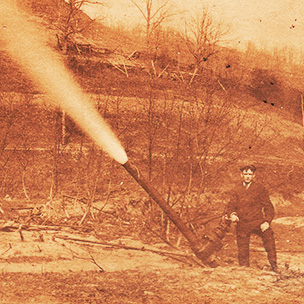December 12, 2014 — Mary Kang wasn’t even originally looking at methane emissions. The Princeton doctoral candidate was trying to get to the bottom of another issue: carbon dioxide escaping after being stored underground. During that research, she got to wondering about methane emissions from old oil and natural gas wells. What Kang, now a Stanford postdoctoral researcher, and other researchers found could be a significant and previously unidentified source of greenhouse gas emissions.
Studying 19 abandoned wells in Pennsylvania, all but one of which were not on a list of abandoned wells kept by the state, the researchers found that, while all the wells were releasing some methane, some of the wells — about 15 percent — were releasing thousands of times more methane than the wells at the lower levels of release. Stressing that their findings are preliminary given they only tested 19 wells — some of which are over 100 years old — the team estimates that the amount of methane coming out of all the abandoned wells in Pennsylvania could be 10 percent of the total amount released due to human activities.
The silver lining in these findings, though, is that 15 percent number related to the so-called super-emitting wells. If such a small percentage were to hold nationwide, then focusing on identifying and capping the super-emitting wells or capturing the methane from those wells is a more realistic option than trying to plug all of the nation’s 3 million abandoned wells — but one that could still have a significant effect.
Read the paper in Proceedings of the National Academy of Sciences. Photo by Greene County, Pennsylvania Photo Archive Project (Flickr | Creative Commons)
![]()
Ensia shares solutions-focused stories free of charge through our online magazine and partner media. That means audiences around the world have ready access to stories that can — and do — help them shape a better future. If you value our work, please show your support today.
Yes, I'll support Ensia!
